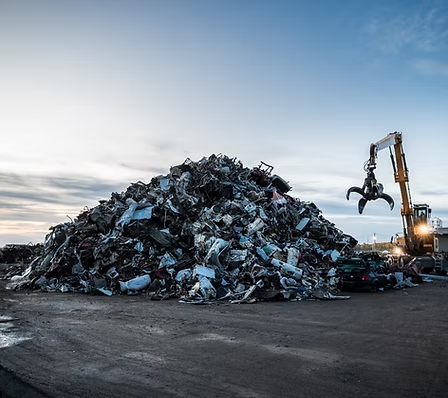Portfolio
Railcar Intake Digitization Platform

Type: Multi-site enterprise application (Hamilton & Montreal, with planned expansion)
Role: Agile Product Owner (Product Manager scope)
Team: 4 Engineers, 3 QA Analysts, 1 Designer, and cross-functional stakeholders from Operations, Logistics, IT, and Security
Context
Developed an enterprise application to digitize railcar intake workflows — capturing weight and photos automatically, generating tickets, and centralizing operational data for logistics and operations teams.
Problem
Railcar processing was fully manual: operators transferred weight and photo data by hand and created tickets manually. This led to significant delays, frequent data entry errors, and safety risks from manual photo capture in restricted zones. Operations teams also lacked real-time visibility into railcar status and throughput.
Hypothesis
Automating weight and photo capture, ticket generation, and real-time tracking across configurable site deployments would reduce manual workload, improve data accuracy, enhance safety, and give managers live operational visibility.
Discovery
- Conducted on-site observations across multiple shifts to map workflows.
- Interviewed operators, loaders, and site managers to identify bottlenecks and failure modes.
- Analyzed historical ticket logs to quantify manual time cost and error frequency.
Solution & Execution
- Automated weight and photo capture with ETL imports and automatic RECY ticket generation.
- Built map-based UI with role-based access and real-time railcar visibility.
- Designed site-configurable sensor and camera integrations with offline and retry logic for reliability.
- Implemented CI/CD pipeline and a phased rollout plan including operator training and site-specific runbooks.
Outcomes
- ~90 minutes saved per shift previously spent on manual data transfer.
- 100% elimination of manual ticket creation for RECY tickets.
- Reduced safety risks by removing manual photo capture in hazardous zones.
- Improved operational visibility with real-time status dashboards for managers and loaders.
- Enhanced system observability via Azure runtime and connectivity logging for faster troubleshooting and audits.
Key Learnings & Next Steps
- Integrate product analytics to monitor throughput and adoption trends.
- Conduct A/B testing of UX for faster railcar identification.
- Extend integration with supplier billing systems to automate reconciliation and further reduce administrative overhead.
Bilingual Claims & Collections Automation Platform

Type: Enterprise workflow application for Canadian and U.S. Recycling sites
Role: Product Owner & Business Analyst
Team: Cross-functional stakeholders (Finance, Traders, Operations, IT); 1 Engineer, 1 QA Analyst
Context
Developed a bilingual (EN/FR) claims management platform to centralize and automate claims and accounts receivable (AR) workflows across AIM Recycling’s Canadian sites, with scalability for U.S. operations.
Problem
Claims and approvals were managed through fragmented email chains and ad-hoc communication tools. This caused slow decision-making, mounting claim backlogs, and poor visibility into collections and outstanding balances.
Hypothesis
By introducing role-based workflows, batch approval/rejection capabilities, and real-time dashboards, the platform would accelerate claim resolution, reduce manual coordination, and improve collections follow-up and transparency.
Discovery
- Conducted interviews with finance staff and traders to document approval steps and bottlenecks.
- Mapped existing workflows and identified key inefficiencies in hand-offs and escalation paths.
- Collected baseline metrics on claim resolution time and backlog volume to measure improvement.
Solution & Execution
- Delivered bilingual claim workflows with configurable roles, batch approvals, and audit trails.
- Built dashboards for claim aging, backlog size, and status tracking for finance and operations users.
- Executed phased deployments with CAB reviews, training sessions, and feedback-driven iterations.
- Designed scalable architecture enabling reuse for AP/AR processes such as refunds, credit notes, and vendor setup.
Outcomes
- Accelerated claim decisions and follow-ups, improving collections efficiency and reducing backlog.
- Lowered manual effort through batch processing and automated notification flows.
- Enhanced visibility for Finance and Operations via real-time dashboards and unified reporting.
- Future-ready foundation for cross-region deployment and workflow expansion.
Key Learnings & Next Steps
- Extend to accounts payable workflows and integrate automated reminders tied to collections KPIs.
- Implement product analytics to quantify impact on cash flow and resolution cycle time.
B2B Commerce & Field Operations Digitization

Type: Web and mobile SaaS platform for catalytic converter trading and reconciliation
Role: Product Owner (end-to-end ownership)
Team: Cross-functional stakeholders (Traders, Operations, IT); 4 Engineers, 2 QA Analysts, 2 Designers
Context
Built a B2B digital platform to modernize catalytic converter transactions — covering grading, valuation, cart creation, pricing, tolling, and reconciliation. The web and mobile applications support both internal account teams and external sellers, enabling faster, more traceable trade operations.
Problem
Field teams relied on WhatsApp and manual workflows for grading and negotiation, leading to slow reconciliation, missing audit trails, and limited seller self-service. Mobile users in the yard also faced connectivity issues and needed an interface operable with gloves.
Hypothesis
If grading, messaging, and reconciliation are digitized in a mobile-first, offline-capable platform, field operations will be faster, communications traceable, and seller engagement higher — driving more transactions initiated directly by sellers.
Discovery
- Conducted 20 field interviews and multiple in-field usability tests under low-connectivity conditions.
- Gathered feedback on gloved interaction, photo capture ergonomics, and offline user flows.
- Analyzed reconciliation and payment cycle logs to benchmark delays and manual dependencies.
Solution & Execution
- Delivered mobile offline mode, cart creation, pricing, and crate management features.
- Added integrated messaging and notifications, replacing ad-hoc communication channels.
- Designed touch-optimized UI for gloved use and quick grading capture.
- Coordinated RFCs and CAB approvals for backend upgrades (session persistence and Java migration).
- Managed sprint planning, backlog grooming, and cross-platform releases across web and mobile.
Outcomes
- ~80% reduction in ad-hoc communications via integrated messaging.
- ~60% faster cart reconciliation and payment turnaround through real-time grading validation.
- ~40% of transactions now initiated by external sellers, boosting engagement and self-service adoption.
- Full auditability and traceability achieved across the transaction lifecycle.
- Reliable mobile performance in low-connectivity environments.
Key Learnings & Next Steps
- Instrument the conversion funnel (seller → cart → payment) to measure transaction efficiency.
- Run pricing logic experiments to optimize deal margins and conversion rates.
- Track LTV of mobile-acquired buyers to quantify the ROI of field digitization.
Employee Ticket Management Platforms

Type: Enterprise workflow application for internal HR and employee operations
Role: Product Owner & Project Manager & Business Analyst
Team: Cross-functional stakeholders (HR, IT); 1 Engineer, 1 QA Analyst
Context
Developed an internal platform to digitize employee ticket requests, approvals, and distribution, replacing legacy email-based workflows that were prone to errors, lost requests, and delayed approvals.
Problem
Manual, email-driven request handling caused significant inefficiencies — requests were frequently missed, approvals were slow, and there was no clear audit trail or accountability across departments.
Solution & Execution
- Delivered a role-based ticketing system with import templates, validation, and detailed activity logs.
- Managed UAT sessions, soft launch, and full organization-wide rollout with comprehensive training.
- Created support documentation and reusable templates for bulk upload operations.
- Ensured a secure, scalable architecture adaptable to multiple venues and configurable approval hierarchies.
Outcomes
- ~80% elimination of manual email handling for ticket workflows.
- ~60% faster approval turnaround through automated routing and validation.
- Full auditability with complete logging of all actions and approval paths.
- Scalable foundation to support future HR and internal service expansions.
Key Learnings & Next Steps
- Integrate usage analytics to monitor adoption rates and identify service bottlenecks.
- Evaluate expansion to additional HR and internal administrative workflows for broader automation benefits.